PGRK "Midgetman"
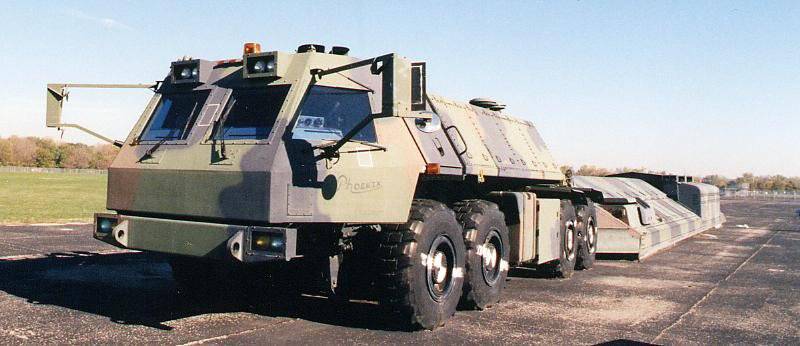
In January 1983g. To study the prospects for the development of the American group of ICBMs of the SAC of the US Air Force for the period until the end of the 20th century, President Reagan established an independent commission chaired by Lieutenant General B. Scowcroft. The verdict of the commission was made public in April 1983. One of the results of the commission’s work was the conclusion that in order to meet the needs of the Air Force SAC for a promising, relatively cheap ICBM with a high degree of survivability, it is necessary to develop a “small, solid-fuel, single-block and high-precision mobile ICBM ground-based”. A study of other deployment options for this ICBM was also proposed. A few days after the results were announced, President Reagan approved the findings of the Scowcroft Commission. In May of the same year, the findings of the commission were approved by the Senate and the House of Representatives of the US Congress. In August 1983g. Secretary of Defense Weinberger decided to immediately begin to develop specific engineering requirements for SICBM ("Small Intercontinental Ballistic Missile") - a new project was encrypted under this acronym.
Work on the formation of the shape of the future rocket began as early as January 1984, and was carried out under the direction of the BMOH Ballistic Missile Organization Headquarters (Ballistic Missile Organization, Headquarters of), Norton Air Force Base (California). In the same year, work began at the Hill (Utah) airbase, at the Ogden Air Force Logistics Center, to create specialized experimental test benches for testing SICBM missiles. From the outset, it was decided to use only promising structural materials, high-energy types of solid fuels and the most modern electronics when creating a new rocket. It was decided to maximally “unload” the rocket by abandoning the stage of dilution, facilitating the PCR PRO. According to the calculations of specialists, the mass of the future rocket should not have exceeded 15,42. The PGCC was developed from the 1983 of the year in accordance with the Midgetman (“Dwarf”) experimental design program. Based on the unique design and technological solutions, the PGRK was created as part of a single transport-launcher (TPU) with high traction-dynamic and minimal mass-dimensional characteristics with a new small-sized and high-precision ICBM “Midgetman”.
According to the tactical and technical characteristics of the PGRK, it was distinguished by high readiness for launching a missile from a combat starting position (BSP) and combat patrol routes, and also had the ability to quickly disperse and maneuver to change field positions (according to the law of random numbers) over a large area. The number of personnel was limited to the calculation of the TPU, including the commander and the driver. Management of combat patrols and missile launches on the march was provided (by radio and space communication channels) from a secure mobile command and control center (PUP). To adopt and deploy the PGRK was planned in 1991 on the infrastructure of the Minithman and MX missile systems. The program received the status of "highest national priority" and was controlled by the US Congress.
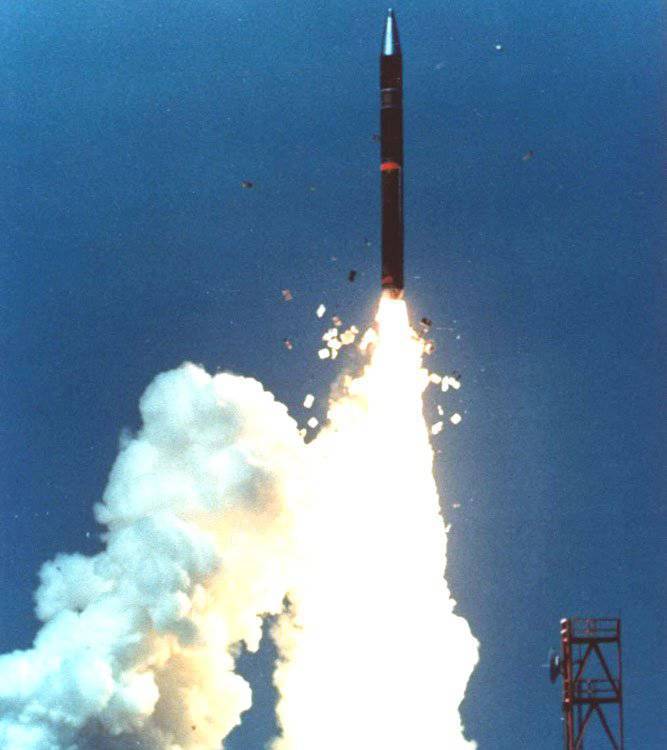
The Midgetman ICBM was a compact three-stage solid-fuel rocket with a series connection of steps, made in one caliber, which provided the most compact design. Its performance characteristics are listed in the table.
Maximum firing range, km 11000
Rocket length, m 13,5
Rocket diameter, m 1,1-1,25
Starting weight, t 16,8
Payload mass, t 0,5-0,6
Number of warheads, units 1
Charge power, Mt 0,6
Shooting accuracy (KVO), m 150
The rocket stages used three rocket solid-fuel engines whose shells were made of a composite material based on organic fiber of the Kevlar type with the addition of graphite filaments. The engines had one rotating nozzle partially recessed into the chamber, which made it possible to reduce the length of the ICBM. The astro-inertial control system with BTSVK provided high accuracy of missile targeting to highly protected and small-sized objects of a potential enemy. The head part was equipped with the 21 Mk warhead (with MX missile) and an effective set of means to overcome the missile defense system of a potential enemy. In order to protect the missile from the damaging factors of nuclear weapons original design and functional protection measures were applied. The system of "cold start" provided the release of the rocket to a height of about 30 m, followed by the launch of the first stage cruising engine. The flight tests of the rocket were scheduled for 1989 year.
Protected TPU was intended for transportation, preparation and launch of a rocket from points of permanent deployment and combat patrol routes. Demonstration models of wheeled (developer - the corporation "Boeing") and tracked ("Martin-Marietta") TPU passed transport tests at Avb Malmster and the US road test site. According to their results, the installation was chosen, which was a truck tractor with a semi-trailer (actually the launcher) on a multi-axle wheeled chassis with steered axles. The container with the rocket was inside the semi-trailer and was covered with metal drop-down flaps. The tractor was equipped with a four-stroke 12-cylinder engine with turbocharging power 1 200 l. with. The predicted characteristics of TPU are presented in the table.
Dimensions on the BSP and on the field position, m 20,5x3,8x1,8
Dimensions on the march, m 30 x 3,8 x 2,8
Weight of launcher with rocket, t 80-90
Mass of PU, t 70
PU load capacity, t 24
Average speed, km / h:
- on the highway about 60
- cross-country about 20
- on improved pound roads about 40
Power reserve, km 300
Fuel consumption per 100 km, l 400
TPU deployment time at the field position to the position of maximum security and stability, min about 2
Time to roll up the TPU and prepare for the march when changing the field position (excluding the time of the tractor's arrival), min about 5
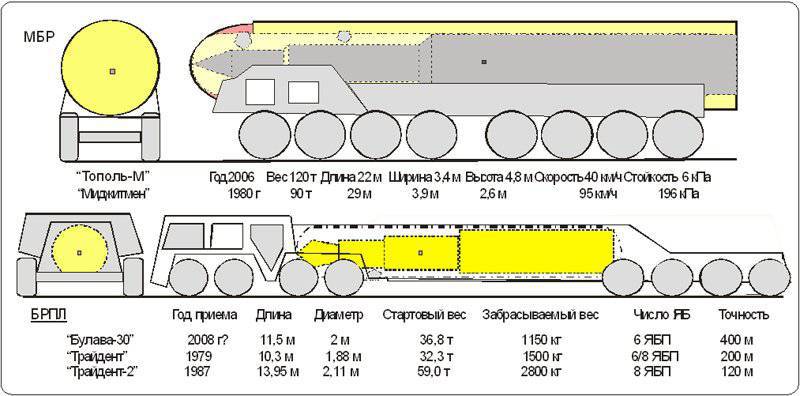
To ensure the launch of the XMGM-134A rocket, American designers used the so-called. "mortar" scheme. Starting complexes MBR "Midgetman" should have been a four-axle tractor with a three-axle semi-trailer, on which a transport-launch container made of organic fiber, housed in special armor steel sashes, was placed in a horizontal position. On tests, a prototype mobile launcher - "Phoenix" showed the speed of 48km / h on rough terrain and up to 97km / h on the highway. The power plant is a diesel engine with turbocharging power 1200 hp, transmission - electro-hydraulic. When receiving the command to launch the rocket, the tractor stopped, unloaded the semi-trailer from the TPC to the ground and pulled it forward. Due to the presence of a special plow-like device, the semi-trailer is self-digging, providing additional protection against the damaging factors of a nuclear explosion (see diagram). Further, the semitrailer flaps opened and the transport and launch container was brought to a vertical position. A solid propellant gas generator placed in the lower part of the container, when triggered, threw a rocket to a height of up to 30m from the upper edge of the TLC, after which the main engine of the first stage was switched on. To reduce the error in determining the coordinates of the starting position, the BGRK was to be equipped with satellite navigation systems.
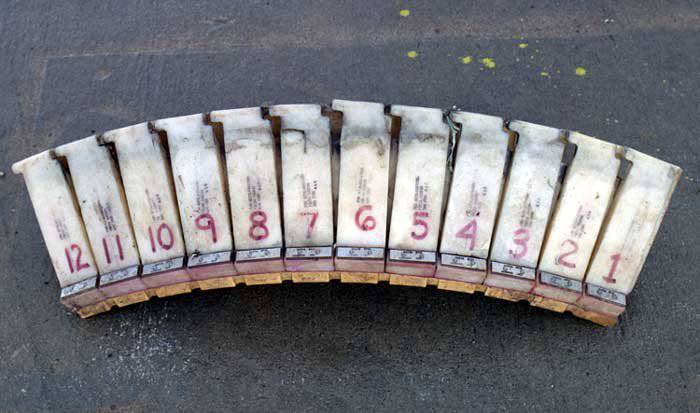
The rocket was fixed in the transport and launch container with the help of eight rows of special polyurethane tiles (see photo), covered with teflon-like material. They performed cushioning-shutting functions and were automatically removed after the missile exited the container. During test launches, the rocket was launched from a special launch canister mounted on the surface of the Earth in an upright position.
However, at the beginning of 1988, the views on the preference of the development of BZHRK appeared in the US Congress, since the MX rocket was considered already spent. Many congressmen lobbying for the interests of the Navy, given the adoption of the Trident-2 SLBM, declared the dubious effectiveness of the Midgetman rocket system and critically evaluated the simultaneous deployment of two types of ground-based mobile missile systems. It was considered inexpedient to increase the range of rocket complexes to five or six types, since the costs of maintaining and operating weapons of the US SNA increased. In addition, as shown by additional studies, the transition to the full-scale development of PGRK will require huge financial costs per warhead, especially since the rocket had limited energy capabilities for retrofitting to a divided warhead.
As a result, funding for the Midgetman OCR program was discontinued in 1989, of course, there was a break in the work related to it, and part of the cooperation was broken up. The main factor in the decision to suspend the development of the Midgetman PGRK was the military-political factor — the completion of the process of preparing the Treaty between the USSR and the USA on the reduction and limitation of strategic offensive arms (the START-1 Treaty). According to foreign analysts, the probability of its conclusion was high and the Americans intended to “exchange the idea for iron,” that is, to persuade the Soviet Union to abandon their mobile missile systems in response to the non-deployment of the Midgetman missile system in the United States.
It was also predicted that, sooner or later, the CDF of the country, under the specious pretext, would abandon the PGRK and BZhRK in favor of developing the SSBNs with the Trident-2 SLBMs. It is understandable that in connection with the signing of 31 on July 1991 of the START-15 Treaty, the President of the United States, in his address to the nation of 28, on September 1991, announced the closure of the OCR Midgetman program.
At the same time, the American CDF announced that a significant scientific and technical background had been created, allowing to resume full-scale tests and begin to deploy the Midgetman missile system from 1994, although the actual development of the main PGRK systems was at the level of 15-20 percent. Thus, according to the flight test design program, it was planned to conduct 22 missile launches, including from real combat patrol routes. However, the first trial launch of an experimental rocket was unsuccessful for technical reasons.
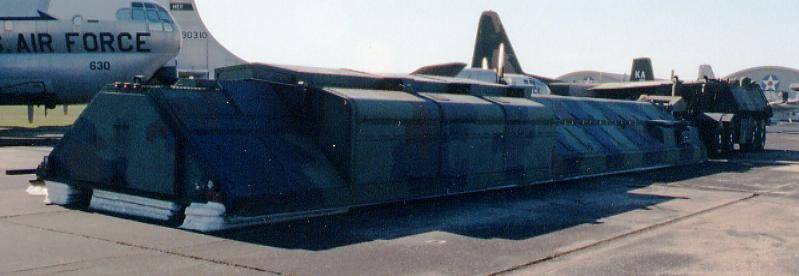
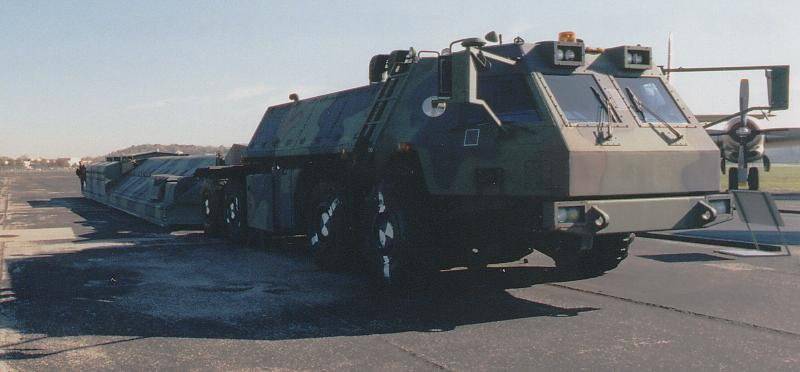
In the course of throwing tests, only elements of the cold start system were tested. Due to the lack of an experienced TPU, resource and transport tests of the unit with studies of the behavior of the rocket under the impact of shock and vibration loads were not carried out. Unable to develop forms and methods of combat use of the PGRK, a system of organization of combat duty and control of nuclear missiles on the BSP and combat patrol routes, the order of dispersal and maneuvering, the basics of maintenance and operation, masking, engineering preparation of combat patrol routes, organization of protection and defense PGRK, as well as other types of comprehensive security. American specialists did not even think about embarking on plans for construction and installation work at the BSP airbases of ICBMs.
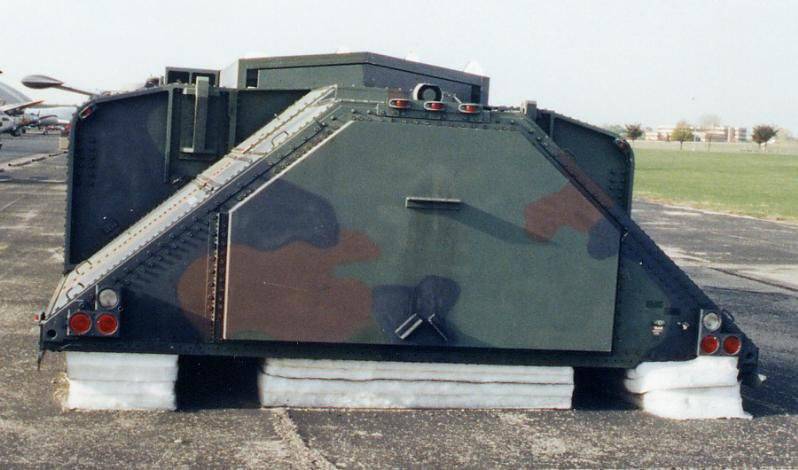
Nevertheless, the United States military-industrial complex did not create the PGRK for eight years of implementing the Midjitman R & D program for various military-political reasons, which is unequivocally confirmed by the provisions of the START-1 Treaty. For example, in the Memorandum of Understanding on the Establishment of Baseline Data in Connection with the Treaty between the USSR and the United States on the Reduction and Limitation of Strategic Offensive Arms, the American side stated only a prototype and two training models of the Midgetman rocket (without the TTX), and photos in exchange with the Soviet side) did not provide. Facilities for the production, repair, storage, loading and deployment of ICBMs did not indicate6. In addition, the Americans ensured that the basic restrictive and liquidation clauses and procedures with regard to combat railway and mobile ground-based missile systems of the USSR (RF) were included in the text of the Treaty and its applications, although they did not develop their mobile grouping of ICBMs. At the same time, the Soviet (Russian) side, making unilateral concessions, declared in the START-1 Treaty the entire staff group of the BZHRK and PGRK Topol and infrastructure facilities.
It must be recognized that, given the political will of the American leadership and the appropriate financing of the work, the creation and deployment of the Mizhitmen PGRK group would be entirely realistic. The high level of development of rocketry and heavy automotive industry in the United States is beyond doubt. A comparative analysis of mobile missile systems that are in service with some states shows that the Midgetman PGRK created was worthy of operational and strategic characteristics for preparing and conducting missile launches with BSP, operational dispersal and combat missions from combat patrol routes, was sufficiently protected, vitality, stealth actions and the ability to participate in response.
In addition, it should be added that it would be correct to consider Kurier PGRK as an analogue of “Dwarf”, and not systems like “Topol”, “Topol-M” or “Yars”.
Information sources:
http://pentagonus.ru/publ/19-1-0-1205
http://rbase.new-factoria.ru/missile/wobb/midgetman/midgetman.shtml
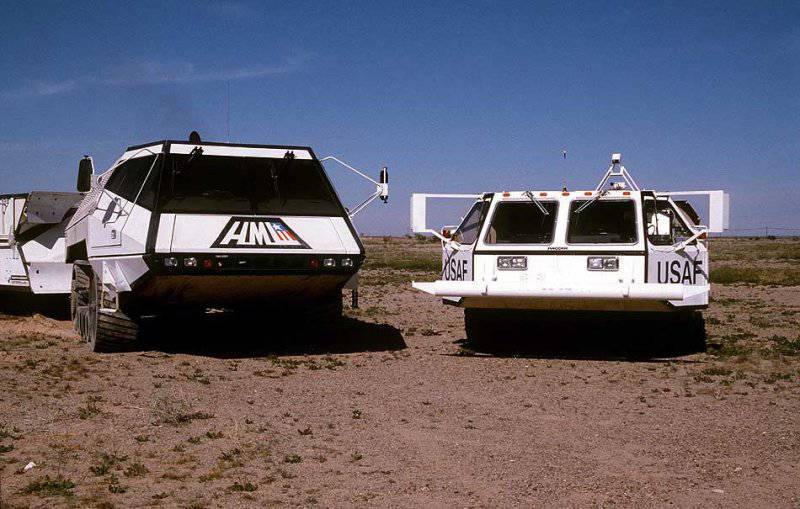

Information